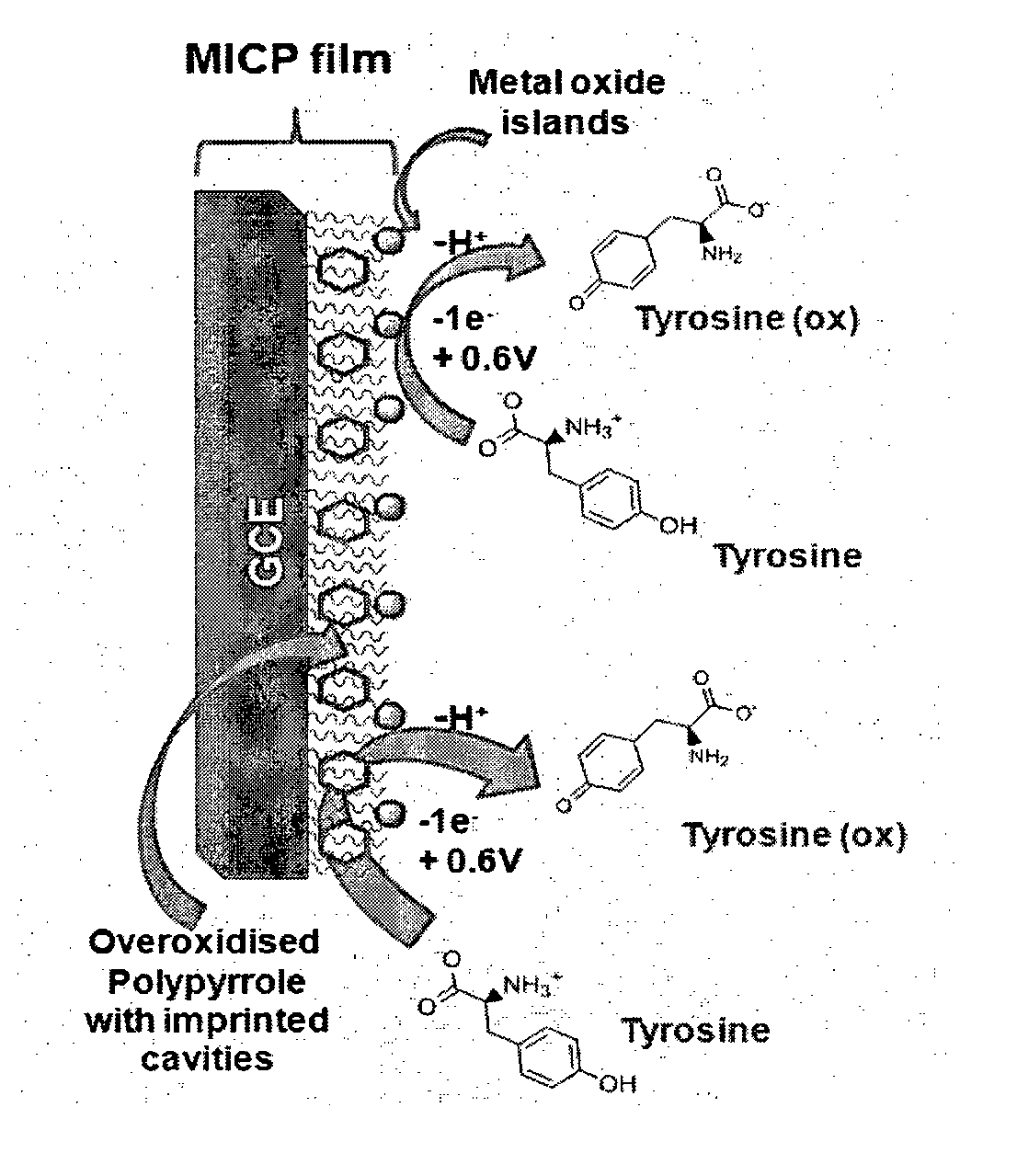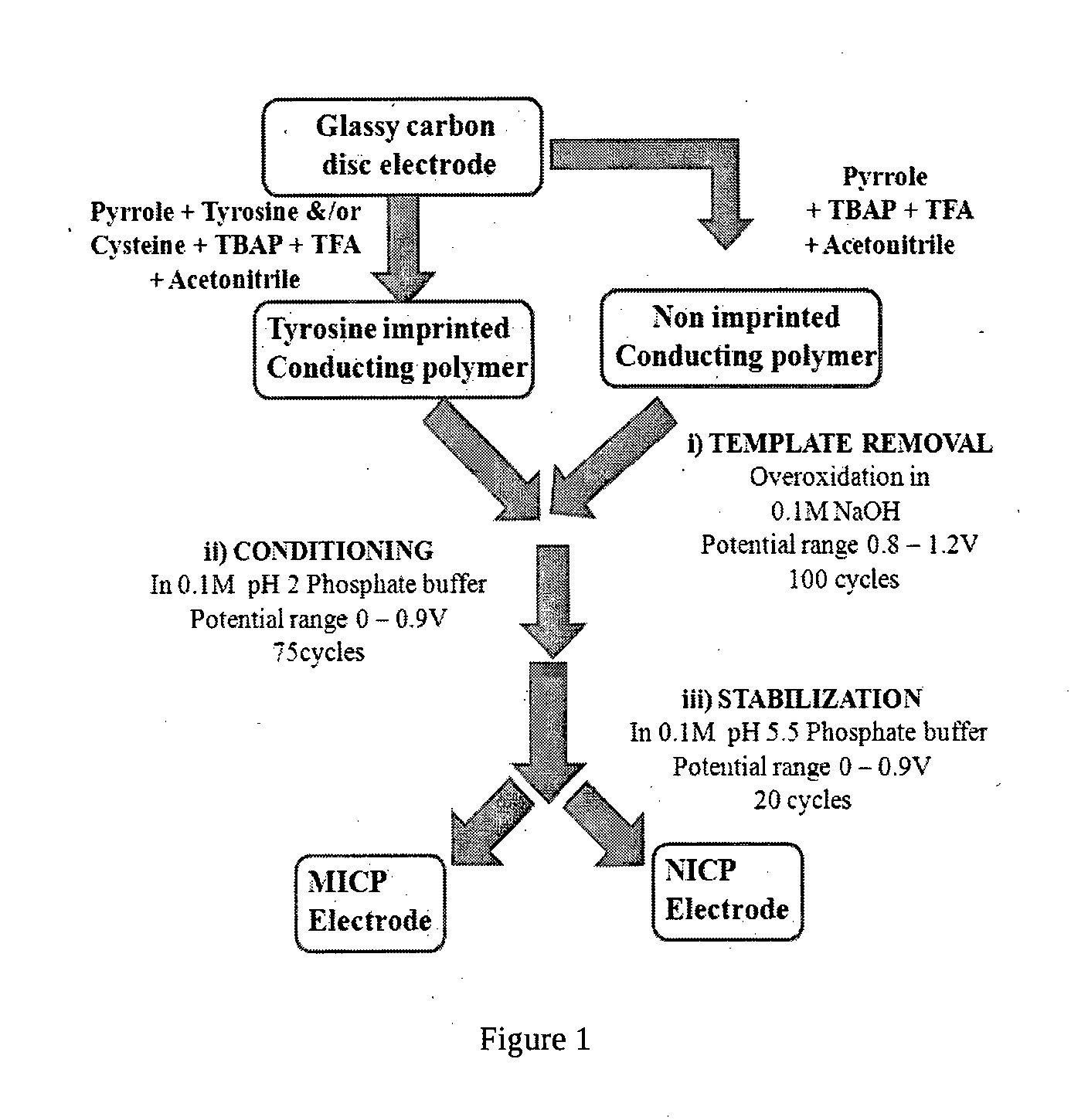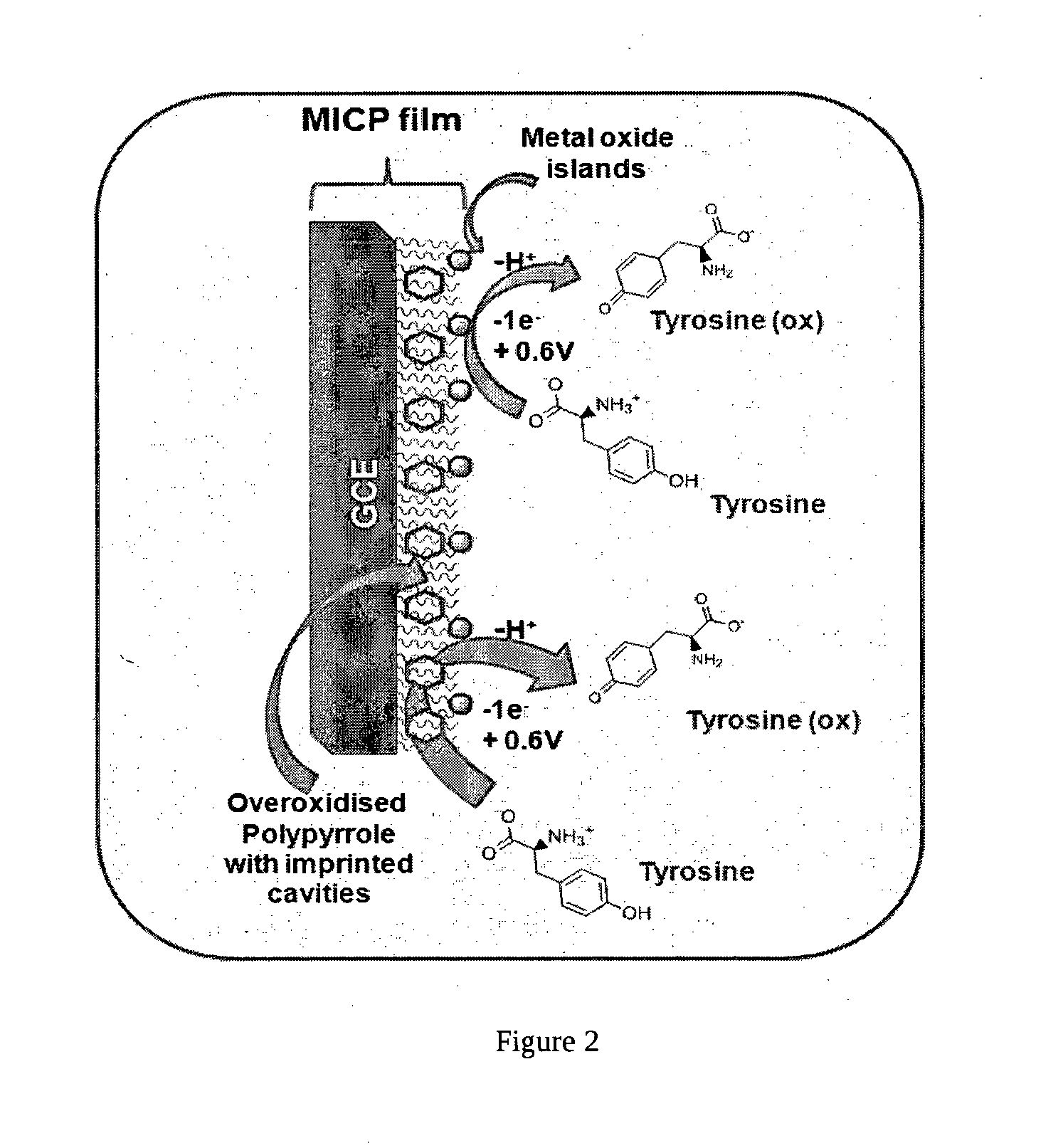Molecularly Imprinted Conducting Polymer Film Based Aqueous Amino Acid Sensors
a technology of conducting polymer film and amino acid sensor, which is applied in the field of making, can solve the problems of poor stability and lack of selectivity
- Summary
- Abstract
- Description
- Claims
- Application Information
AI Technical Summary
Benefits of technology
Problems solved by technology
Method used
Image
Examples
example 1
[0058]The MICP film was prepared by electropolymerising 0.002M (0.134 μg / ml) of pyrrole in 20 ml of acetonitrile as supporting electrolyte containing 0.01M of tetrabutyl ammonium perchlorate and 35 μl trifluoroacetic acid at a deposition potential of 0.9V vs Ag / AgCl for a duration of 60 s in presence of 10−3M of L-tyrosine template onto glassy carbon electrode. The electrode was then taken out and template is then ejected out by electrochemical overoxidation in sodium hydroxide (>0.1M) by repeated cycling in the potential window of 0.8 to 1.2V vs Ag / AgCl for a minimum of 100 times at scan rate of 50 mV / s. The template leached MICP film electrode is then washed by cycling a minimum of 75 times in the potential window of 0 to 0.9V vs Ag / AgCl at scan rate of 100 mV / s. Subsequently, the above film electrode is stabilized in pH 5.5 phosphate buffer by cycling in the potential window of 0 to 0.9V for minimum of 20 times at 50 mV / s to obtain MICP film based electrode for L-tyrosine sensing...
example 2
[0059]The MICP film was prepared by electropolymerising 0.003M (0.201 μg / ml) of pyrrole in 20 ml of acetonitrile as supporting electrolyte containing 0.01M of tetrabutyl ammonium perchlorate and 35 μl of trifluoroacetic acid at a deposition potential 0.9 V vs Ag / AgCl for a duration of 60 s in presence of 10−3M of L-tyrosine or L-cysteine or combination of L-tyrosine and L-cysteine template(s) onto glassy carbon electrode. The electrode was then taken out and template is then ejected out by electrochemical over oxidation in sodium hydroxide (>0.1M) by repeated cycling in the potential window of 0.8 to 1.2V vs Ag / AgCl for a minimum of 100 times at scan rate of 50 mV / s. The template leached MICP film electrode is then washed by cycling a minimum of 75 times in the potential window of 0 to 0.9V vs Ag / AgCl at scan rate of 100 mV / s. Subsequently, the above film electrode is stabilized in pH 5.5 phosphate buffer by cycling in the potential window of 0 to 0.9V for minimum of 20 times at 50 ...
example 3
[0060]The MICP film was prepared by electropolymerising 0.004M (0.268 μg / ml) of pyrrole in 20 ml of acetonitrile as supporting electrolyte containing 0.01M of tetrabutyl ammonium perchlorate and 35 μl of trifluoroacetic acid at a deposition potential 0.9V vs Ag / AgCl for a duration of 60 s in presence of 10−3M of L-tyrosine template onto glassy carbon electrode. The electrode was then taken out and template is then ejected out by electrochemical overoxidation in sodium hydroxide (>0.1M) by repeated cycling in the potential window of 0.8 to 1.2V vs Ag / AgCl for a minimum of 100 times at scan rate of 50 mV / s. The template leached MICP film electrode is then washed by cycling a minimum of 75 times in the potential window of 0 to 0.9V vs Ag / AgCl at scan rate of 100 mV / s. Subsequently, the above film electrode is stabilized in pH 5.5 phosphate buffer by cycling in the potential window of 0 to 0.9V for minimum of 20 times at 50 mV / s to obtain MICP film based electrode for L-tyrosine sensing...
PUM
| Property | Measurement | Unit |
|---|---|---|
| pH | aaaaa | aaaaa |
| pH | aaaaa | aaaaa |
| volume | aaaaa | aaaaa |
Abstract
Description
Claims
Application Information
 Login to View More
Login to View More - R&D
- Intellectual Property
- Life Sciences
- Materials
- Tech Scout
- Unparalleled Data Quality
- Higher Quality Content
- 60% Fewer Hallucinations
Browse by: Latest US Patents, China's latest patents, Technical Efficacy Thesaurus, Application Domain, Technology Topic, Popular Technical Reports.
© 2025 PatSnap. All rights reserved.Legal|Privacy policy|Modern Slavery Act Transparency Statement|Sitemap|About US| Contact US: help@patsnap.com



